Radiator cooling fan: device and possible malfunctions
The design of any modern car consists of many different nodes and mechanisms. One of these is the engine cooling system. Without it, the engine would have endured constant overheating, which ultimately would lead it out of order. An important component of this system is the radiator cooling fan. What is this item, how is it arranged and what is it intended for? The answer to this question is further in our article.
Characteristic
The radiator cooling fan is a part that provides forced air circulation for the engine. Due to the uniform and constant heat removal from its elements, the temperature of the FEA always remains within the working and rarely when exceeds +95 degrees Celsius.
Varieties
There are two types of data structures of elements:
- Electric.
- Mechanical.
The last species is working at the expense of the clinorem transmission of effort from as for the electric, such a radiator cooling fan is driven by a special motor. Also, this design assumes the presence of a separate management system. The intensity of this element directly depends on the temperature sensor readings.
Device and principle of operation
At the moment, it is customary to distinguish three types of fans:
- With ukivatta.
- With the thermal switch.
- With ECU (electronic control unit).
As for the first type, the system based on the Viscounts is practically not found on cars. Basically, they were installed on the engine with the longitudinal arrangement of the engine or on massive all-wheel drive SUVs, which overcame also water obstacles. The Viscounts, which is responsible for the rotation of the fan, is completely sealed. This design allows you to protect it from the effects of external factors, including water. By the way, the electrical fans after penetrating the inside of the fluid block immediately fail. Further repair and restoration they are no longer subject to. 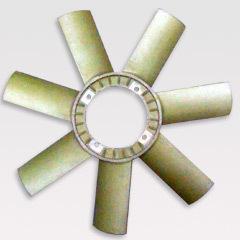
The Viscouft is filled with the latter when exposed to high temperature changes its properties and, depending on the level of heating, increases or reduces the intensity of the fan rotation. The design of the Viscounts assumes the presence of such parts as a packet of disks of the slave and leading shafts, as well as a hermetic case with gel or oil.
How does it all work? The principle of operation of this element is based on the transmission of rotational movements from the leading shaft due to disc packets. The latter are placed in silicone fluid, that is, in gel or oil. The viscosity of these components, as we have already said earlier, varies depending on the temperature.
Elements with electric drive
As for the fans with an electrical drive, they consist of the following elements:
- Electric motor.
- Electronic control unit.
- Temperature sensor.
- Fan power relay.
More modern components have two temperature sensors in their design, one of which is installed in the nozzle coming out of the radiator, and the second to the thermostat case. Sometimes it is mounted in the nozzle, which comes out of the engine. The electronic unit, depending on the difference in the readings of these two sensors, controls the intensity of the rotation of the impeller. And results in an electric motor of the radiator cooling fan. 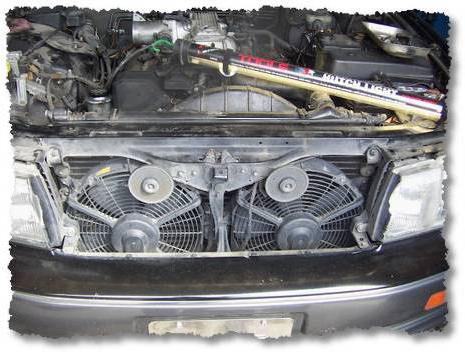
For the correct operation of this motor, it is also important for the presence of a flow meter of air and a device that will monitor the crankshaft frequency (DPKV). After received a short signal from all sensors, information is processed, and the electronics activates the relay, including the fan. During his work, the system controls the number of rotations and can increase or reduce the frequency of the impeller revolutions. Such a design is used now on most passenger cars and SUVs.
Devices with thermal switch
Prior to the appearance of systems with electronic control, all machines were equipped with fans with a thermal switch. It was this element that performed the function of shutdown and turn on the impeller engine.
The principle of operation of such a system is as follows. From the temperature sensor, which is installed in the engine cylinder housing, a signal is fed on the scale that is located in the cabin. Further, depending on the indications obtained and the degree of fluid response in the radiator on thermal change, it turns on or off the fan. 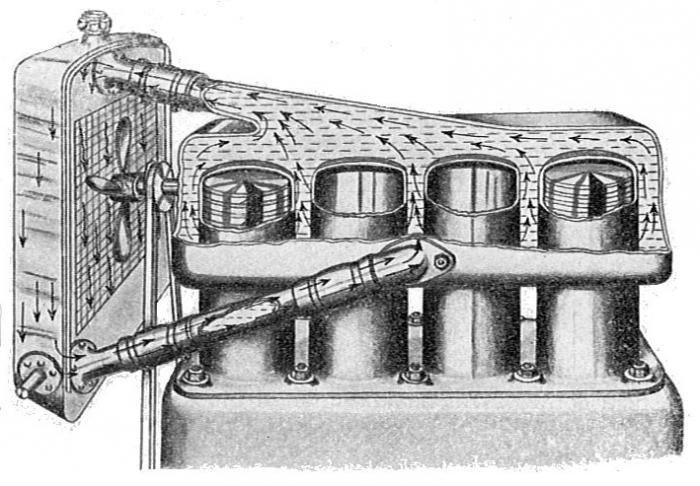
As soon as the temperature of the cooler increases to a certain value, the contacts connected to the incluster power circuit are closed inside the thermal switch. Then the electric current is serving on the motor, so that the fan begins to rotate. After the tosol temperature drops again, the contact opens and, accordingly, the impeller stops working.
How to find the cause of the element breakdown?
As we have already said in the entry, the fan malfunction can cause frequent overheating of the power plant. Therefore, the driver must regularly monitor its performance and in case of detection of the breakage immediately eliminate it.
How to check this detail for goodness? You must first remove the plug connector from the temperature sensor. If this element is single, it should be checked and its serviceability. Make it is easy - it is enough to simply produce a manual closure of terminals in the plug using a small segment of the wire. If double, then to check it, you need to close the white-red first, and then the red wire. Ideally, after that, the radiator cooling fan should slowly spin.
Next you need to close the red and black wires. In this case, the impeller should rotate at the maximum speed. 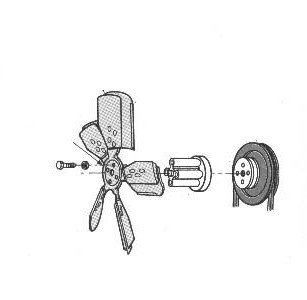
But what to do if the radiator cooling fan does not turn on even after several closure attempts? Conclusion - the temperature sensor came into a malfunction or fuses burned. The latter are checked as follows. The fan connector on a white-red or black and red wire is served a current from the battery terminal with a positive charge. At the same time, with a minus battery terminal, it is powered by a brown wire. If the radiator fan of the cooling system after these manipulations has not earned, it means it is time to replace the impeller itself. In another case, it is recommended to inspect all connectors and plugs that go from the temperature sensor to it.
What if the radiator cooling fan does not turn off?
If the node is immediately driven at work immediately and it never turns off (and this should not be), this indicates a breakdown of the node on sensor. How to check this element in good condition? To do this, turn on the ignition and remove the tip of the wire from the sensor. After that, the fan must be turned off. If the impeller continues to work anyway, the sensor should be replaced. It should also be remembered that with such symptoms, the radiator cooling fan motor is in absolutely working condition, and it is impractical in this case in this case. But it can happen that the source of malfunction turned out to be oxidized terminals. When diagnosing, they should also be inspected and if necessary, to clean up the contacts.
Is it possible to repair the fan?
In some cases, it makes no sense to change the part to the new one, since the malfunction may be altogether. Much cheaper will repair it with their own hands.
In some cases, it happens that banal dirt is the culprit of faults. Therefore, after a successful dismantling of the fan blade is thoroughly cleaned from dust and other deposits. It is best to make it a brush. 
In addition, the breakdown can be in poor contact of the wires. This phenomenon occurs due to the oxidation of elements in the connecting plugs. Next, you need to check the performance of the rotor winding. Sometimes the radiator cooling fan does not work due to the closure or breaking of this part of the system. In this case, each round should be inspected. 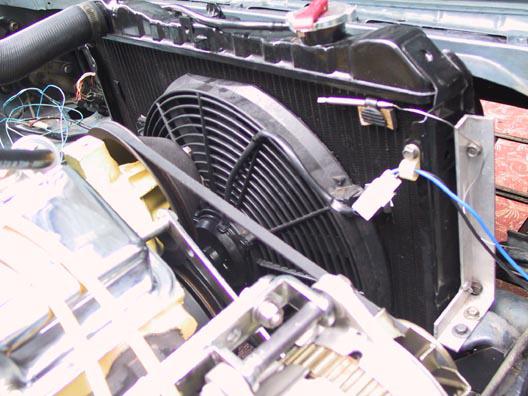
However, there are elements that are not subject to recovery in the design of this node. In addition to temperature sensors, the repair of the radiator cooling fan fan is not subject to the repair. What does it talk about his fault? It is possible to determine the non-working state of the electric motor as a state of the impeller. If during overheating of the power plant, it does not turn on, most likely, the engine of the radiator cooling fan has become unusable. In this case, it is necessary to urgently replace it.
Other malfunctions
All motorists know that the radiator cooling fan (VAZ 2110-2112 can be brought as an example) is a source of increased noise and vibrations. But if this sound of his work exceeds the utmost rate, so that the engine itself is not heard, it says about a number of faults. So why is the noise fan cooling the radiator of Vazovsky cars? There may be several reasons:
- Rejected bolt fixing the impeller to the pulley (fasten the part).
- Broken part of the blade (replace the fan).
- No lubricant on the electric motor.
- Broken bearing (here only replacement).
Conclusion
So, we found out why radiator, and also considered ways to diagnose and repair. 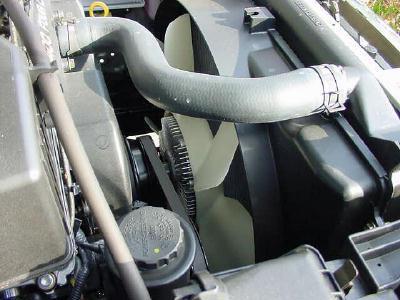 As you can see, this node is a huge importance for the car. His breakdown will certainly make himself felt in the form of regular engine overheating. But after the first such fault, the risk of failure of the details of the cylinder-piston group increases at times. Therefore, you should not postpone this problem for later.
As you can see, this node is a huge importance for the car. His breakdown will certainly make himself felt in the form of regular engine overheating. But after the first such fault, the risk of failure of the details of the cylinder-piston group increases at times. Therefore, you should not postpone this problem for later.














